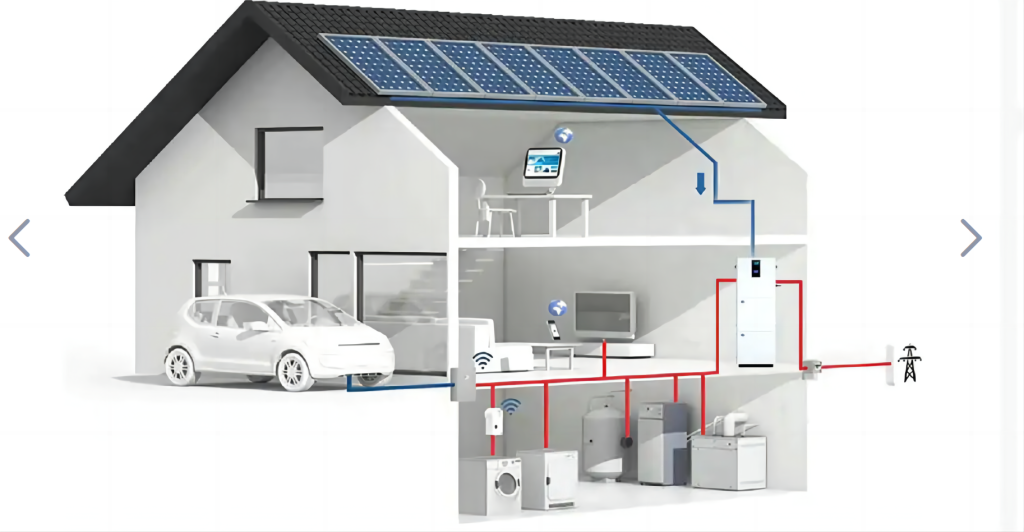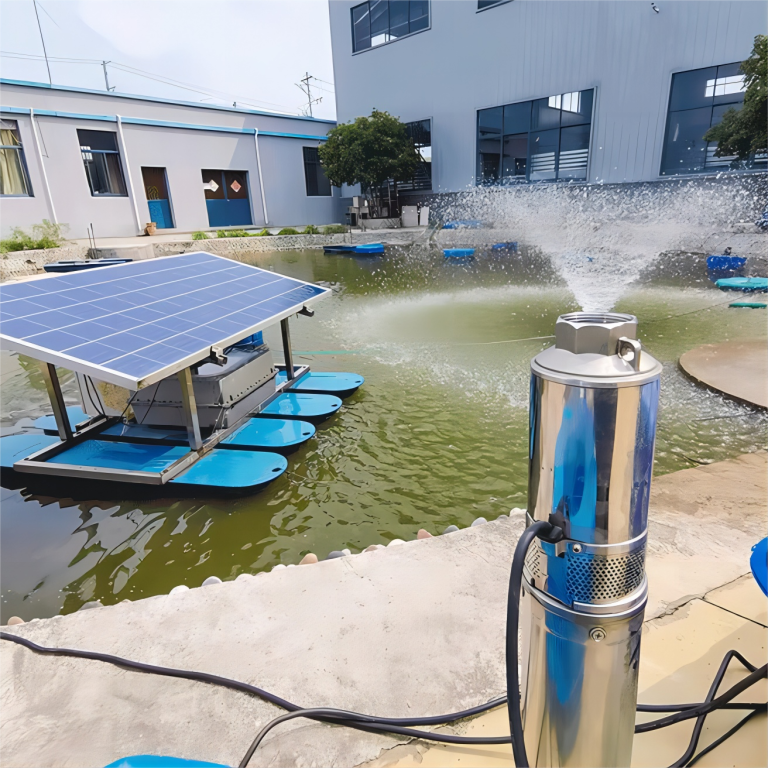-
+86-13287028881
-
joymeetrade@gmail.com
“Empowering Homes: The Rise of Smart Photovoltaic Energy Storage Systems”
Smart home photovoltaic energy storage systems have surged in popularity in recent years, offering continuous green electricity for households day and night. Utilizing solar power generation, these systems alleviate concerns about high electricity prices, saving costs and enhancing the quality of life for families.
During daylight hours, the household photovoltaic energy storage system absorbs solar power, automatically storing it for later use. In the event of a power outage, the system seamlessly switches to standby power, ensuring uninterrupted operation of lighting and electrical appliances. During periods of low electricity consumption, the battery pack charges itself, ready to meet peak demand or provide backup power. Additionally, these systems can balance power loads, further reducing household energy expenditure. Similar to micro-energy storage power stations, smart home photovoltaic energy storage systems operate independently of urban power supply pressures.

What is a Home Photovoltaic Energy Storage System?
A home solar energy storage system integrates solar photovoltaic conversion with energy storage equipment, enabling the conversion of solar power into storable electric energy. These systems empower users to generate electricity during the day and store excess power for nighttime or low-light conditions.
Classification of Home Photovoltaic Energy Storage Systems
Currently, there are two main types of home energy storage systems: grid-connected and off-grid systems.
Grid-connected Home Energy Storage System
Comprising five key components – solar array, grid-connected inverter, BMS management system, battery pack, and AC load – this system operates in a hybrid manner, drawing power from both photovoltaic and energy storage systems. In standard conditions, the photovoltaic grid-connected system and mains supply power to the load. During power outages, the energy storage system and photovoltaic grid-connected system combine to provide power. Grid-connected systems operate in three modes: mode 1 for energy storage and surplus electricity online, mode 2 for energy storage and power consumption for users, and mode 3 where PV provides partial energy storage.
Off-grid Home Energy Storage System
This system operates independently of the grid, requiring no electrical connection. Off-grid systems work in three modes: mode 1 for energy storage and user electricity on sunny days, mode 2 for providing electricity with both photovoltaic and energy storage batteries on cloudy days, and mode 3 where energy storage batteries provide electricity during evenings and rainy days.
Whether grid-connected or off-grid, both systems rely on inverters as essential components, acting as the brain and heart of the system.
What is an inverter?
Inverters are typical components in power electronics that can convert direct current energy (batteries, batteries) into alternating current (generally 220v50HZ sine or square wave). Generally speaking, the inverter is a device that converts direct current (DC) into alternating current (AC). It consists of an inverter bridge, control logic, and a filter circuit. Standard components are rectifier diodes and thyristors. Almost all household appliances and computers have rectifiers installed in the electrical power supply, from DC to AC, called inverters.
Why do inverters occupy such an important position?
AC power transmission is more efficient than DC power transmission and is widely used for power transmission. The power dissipation of the transmitted current on the wire can be obtained by P=I2R (power = the square of the current × resistance), and it is evident that to minimize energy loss., it is necessary to reduce the resistance of the transmitted current or wire. Due to cost and technical limitations, reducing the resistance of the used transmission line (such as copper wire) is difficult, so decreasing the transmitted current is the only effective method. According to P=IU (power = current × voltage, actually adequate power P=IUcosφ), the direct current into alternating current improves the voltage of the grid and can reduce the current in the wire in order to achieve the purpose of saving energy.
Similarly, in the process of solar photovoltaic power generation, the electricity generated by the photovoltaic array is direct current energy, but many loads require AC power. The DC power supply system has excellent limitations; it is not easy to change the voltage, and the load application range is limited; in addition to the particular power load, it is necessary to use the inverter to convert the direct current into alternating current. The photovoltaic inverter is the heart of the solar photovoltaic power generation system, which converts the direct current generated by the photovoltaic module into alternating current, which is transmitted to the local load or the power grid and has the relevant protection functions of the power electronic equipment. The photovoltaic inverter is mainly composed of the power module, control circuit board, circuit breaker, filter, reactor, transformer, contactor, cabinet, etc. The production process includes electronic parts pre-processing, whole machine assembly, testing, and whole machine packaging process; its development depends on power electronics technology, semiconductor device technology, and modern control technology development.
Classification of inverter
Inverters can be roughly divided into the following three categories:
Grid-connected inverter
Grid-connected inverter is a special inverter, in addition to converting direct current into alternating current, its output alternating current can be synchronized with the frequency and phase of the mains, so the output of alternating current can be returned to the mains, that is, the grid-connected inverter has the ability to synchronize the interface with the mains line. This inverter is designed to transmit unused power to the grid without the need for a battery and can be equipped with MTTP technology in its input circuit.
Off-grid inverter
Off-grid inverters, typically installed on solar panels, small wind turbines, or other DC power sources, convert direct current into alternating current that can be used to power a home, which can use energy from the grid and batteries to power an electrical load. Because it has nothing to do with mains power and does not require any external power supply, it is called “off-grid.” Off-grid inverters were originally systems powered by batteries to implement regional microgrids. In the case of current input, DC input, fast charging input, high capacity DC output and fast AC output, off-grid inverters can store energy and convert it to other uses. It uses control logic to adjust the input and output conditions to ensure optimal efficiency from sources such as solar panels or small wind turbines, and optimizes energy quality by using pure sine wave output. For off-grid solar systems, the battery is mandatory, and it stores energy through the battery for use at sunset or when there is no electricity. Off-grid inverters also help reduce dependence on the traditional grid, which often leads to power outages, blackouts, and energy instability that power companies cannot eliminate.
Inverter Features and Functions in Home Energy Systems
In addition to its critical role in converting direct current (DC) to alternating current (AC), inverters in home energy systems offer several important features and functions:
Off-Grid Inverter with Solar Charging Controller:
An off-grid inverter equipped with a solar charging controller allows users to connect photovoltaic inputs directly. This integration simplifies system connection and inspection by enabling users to monitor the photovoltaic status on the inverter display. These inverters are mainly used in residential and commercial projects to provide electricity, particularly for low-wattage appliances.
Hybrid Inverter:
Hybrid inverters serve two main purposes: they can act as off-grid inverters with built-in solar charging controllers or as off-grid integrated inverters. These versatile devices are suitable for both grid-connected and off-grid photovoltaic systems, with flexible battery configuration options.
Inverter Features and Functions in Home Energy Systems
In addition to its critical role in converting direct current (DC) to alternating current (AC), inverters in home energy systems offer several important features and functions:
- Off-Grid Inverter with Solar Charging Controller: An off-grid inverter equipped with a solar charging controller allows users to connect photovoltaic inputs directly. This integration simplifies system connection and inspection by enabling users to monitor the photovoltaic status on the inverter display. These inverters are mainly used in residential and commercial projects to provide electricity, particularly for low-wattage appliances.
- Hybrid Inverter: Hybrid inverters serve two main purposes: they can act as off-grid inverters with built-in solar charging controllers or as off-grid integrated inverters. These versatile devices are suitable for both grid-connected and off-grid photovoltaic systems, with flexible battery configuration options.
Main Functions of the Inverter:
Automatic Operation and Shutdown:
Inverters automatically start running when the photovoltaic system produces sufficient output power. Conversely, they enter standby mode when power output decreases, ensuring efficient energy utilization throughout the day.
Anti-Island Effect Function:
Grid-connected/energy storage inverters feature anti-island protection circuits to prevent the “island effect.” This occurs when a photovoltaic system continues to supply power to the grid during an abnormal power failure, posing risks to both the system and the grid. The inverter detects grid abnormalities and promptly disconnects to prevent such incidents.
Maximum Power Point Tracking (MPPT) Control Function:
MPPT function is a critical technology in grid-connected/energy storage inverters. It enables real-time tracking and optimization of the photovoltaic system’s output power. By intelligently adjusting voltage or current, the inverter maximizes power generation efficiency, ensuring continuous system operation even under varying conditions.
The development of home energy storage systems aims to enhance household convenience and reliability, particularly during unexpected power outages. These systems also contribute to sustainable energy practices by making solar power generation more reliable and accessible, thereby mitigating the impact of energy crises and promoting environmental conservation.



